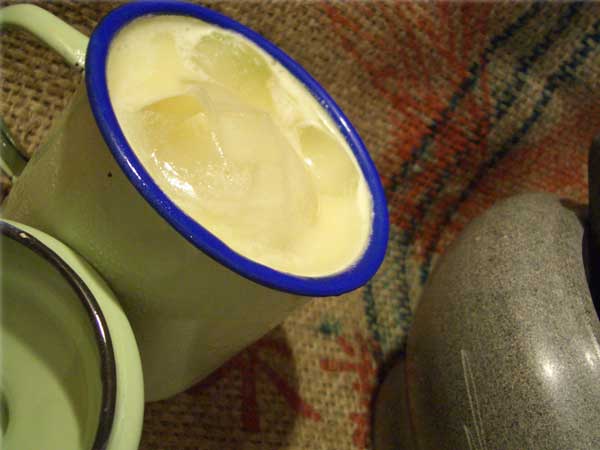If Singapore were a drink, what would it taste like? (All photos courtesy of Provocachic)
As holiday festivities loom once more, many people will get together and cheer to the Lunar New Year, some perhaps with the drink named after the nation, the Singapore Sling. But given how Singapore has evolved over the past several decades, is the popular cocktail getting a bit outdated? Amid all the talk of nationhood today, perhaps a discussion of the country’s flavours will help open new perspectives to the debate. Damian Sim, who has run flavor branding projects for the likes of American Express and Bloomberg, points out that the Singapore Sling is “based on the Gin Sling, an American classic, though they included ingredients such as grenadine, syrup and pineapple juice.” Sim styles himself as a flavor impressionist, and he endeavours to evoke memories and emotions through the taste, aroma, look and feel of his cocktail creations, which can take up to three months of research to design. For a project with the National Museum of Singapore to present Christian Lacroix-inspired cocktails, he selected ingredients that could be linked to the French designer’s way of life. Lacroix would often recycle vintage items for his flamboyant costume designs, so in one cocktail Sim used the core of baby tomatoes that chefs often throw away.Muskmelon cut into a ballerina-like figure also visually represented Lacroix’s fascination with performers, history and the surreal, aside from lending a sweet finish to the drink.
Sensual symbolism The Pan-Asia Cosmo. Could this drink represent Singapore?
Several years ago, at a show called Rojak, which brought together people from different creative disciplines, similar to how the local dish it was named after brings together different fruits and vegetables, Sim designed a recipe that he believes could represent Singapore’s “liquid culinary identity.” One ingredient was a liqueur he made from the torch ginger bud, a dash of which is added into the typical rojak dish. As the bud is also often used in curries and other Southeast Asian and Indian dishes, its taste can give a sense of soothing familiarity to drinkers from Singapore’s different ethnic races. A few drops reminded this writer of the ginger tea popular in hawker stalls nationwide. The bud, however, was only one of the 9 ingredients he used to create what he calls the Pan-Asia Cosmo, but which some simply referred to as the Rojak drink. “When I created the drink as part of the show, the theme was the five Taoist elements, and that was very challenging, very complex. The drink that took me the longest research,” he said. “Under each Taoist element there is a list of ingredients, so I had to select one for each and balance them conceptually and flavour-wise.” “I had Malibu, flavoured it with Japanese kelp, I had flower of salt, I had yogurt, I had Dutch egg, advocaat liqueur, grapefruit. I had two parts of the drink. One part was creamy, I put it into a foam machine, and at the bottom was sparkling apple juice. In the middle I had ice made from Volvic water,” he recalled. It was served in an enamel coated mug.
How to drink
Damian Sim considers some cocktail ingredients. Sim aims to develop memorable drink experiences. “Usually, when people design a dish, they just think of the sensorial impact in just one moment in time, but my recipe designs are conducive to flavour flashbacks over surprising spans of time,” he says. For Sim, the garnish is a key part of a cocktail, providing visual appeal and playing a part in transferring flavor through aroma. To drink a cocktail, he suggests one explore its different layers. “You want to experience it, but you also want the garnish fresh. So I would try the drink on its own, enjoy the aroma, then the garnish and after that the rest of the drink, but you still retain the memory of the garnish,” says Sim. Currently, Sim also does private workshops on the side through his company Provocachic, which offers bespoke branding and cocktails. He also used to blog about drinks for The Gilded Fork, a popular New York-based culinary media network that explores the socio-cultural history of flavours. Sim started flavour branding in 2002, after curiousity led him to try different mixtures on his own. The realisation that many cocktails did not cater to Asian palettes and that some friends did not like alcohol challenged him to develop customised drinks. “I like food, history, cocktails, psychology, sociology, creative direction and branding, and I thought they could all come together,” he says. We'd like to leave you with two questions. One, Provocachic's tagline, is: What would your story taste like? Also, what do you think Singapore’s story should taste like?
Credits -yahoo



No comments:
Post a Comment